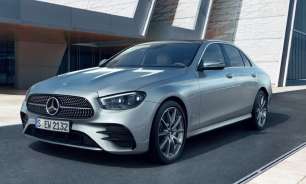I recall driving the AMG SL65 around the backroads of Tassie a few years ago and that twin-turbo V12 monster famously packed 1000Nm of torque, while this car ‘only’ has 800.
But there comes a point where enough is enough… and this is enough!
With maximum torque available from 2500-5000rpm and peak power (430kW) on call from 5500-6500rpm there’s always stupendous acceleration available with a squeeze of your right foot.
Claimed 0-100km/h time is supercar fast at 3.6 seconds, while top speed is a toupe-troubling 315 km/h. And that’s electronically limited!
A typically ferocious engine noise and howling exhaust note accompany rapid progress and shifts from the nine-speed dual-clutch transmission are quick and positive, not to mention especially enjoyable using the steering wheel-mounted paddles.
There are six ‘AMG Dynamic Select’ drive programs from Comfort through to Race, the latter including a Drift Mode, which we didn’t experiment with. Nor did we dip into the ‘AMG Track Pace’ system for circuit-focused mapping and timing
However, far from drifting, the grippy Michelin Pilot Sport 4S rubber (275/35 fr - 305/30 rr) plants the car securely with the all-wheel-drive system and electronic locking rear diff playing their part.
I found the perfect set-up was in the ‘Individual’ mode with the engine, transmission and steering in racier settings and the suspension in ‘Comfort’. The adaptive damping in this configuration mixes smooth ride compliance with sharp dynamic response.
The car’s aluminium space frame chassis is part of a body structure mixing aluminium, magnesium, fibre composites and various strength steels.
Torsional rigidity is claimed to have been improved by 18 per cent and despite the lack of a roof the SL feels tight and solid.
Suspension is by alloy double wishbones front and rear with adaptive damping and active hydraulic anti-roll stabilisation standard (so, no physical anti-roll bars).
At the same time the 4Matic AWD system is able to vary torque distribution up to 100 per cent to the front or rear axle depending on where drive can be put to best use.
The speed sensitive, variable ratio, electronically controlled steering is accurate and turns in beautifully with good road feel. No doubt assisted by electric rear steering able to adjust the angle of the rear tyres by up to 2.5 degrees.
All this adds up to a hugely impressive package that, despite its 1970kg kerb weight, feels agile, athletic and able to attack corners like an overgrown hot hatch, putting its power down with unwavering authority.
While indecently fast the SL63 can also stop rapidly with the AMG high-performance braking system standard.
Huge composite ventilated and cross-drilled discs (390mm fr - 360mm rr) are clamped by six-piston fixed alloy calipers at the front and single-piston units at the rear. They wash off speed calmly and consistently with perfect pedal feel.
Even at highway speeds, particularly with the windows up, normal conversation is easy with the roof down. But if you need to raise (or lower) it, the operation takes 15 seconds and is possible up to 60km/h.
Under the heading of miscellaneous observations, the turning circle is a not insubstantial 12.8m, so beware in the car park.
A front axle lift function is a welcome standard feature, raising the car’s nose 30mm with the press of a button. And lift locations are stored in GPS data, so the car will subsequently remember to lift itself at the same place, even if you don’t!
Heating and cooling for the front seats combined with the heated steering wheel and Air Scarf neck warming makes winter top-down driving a pleasure.
The digital instrument display is not only crystal clear, it can be changed through multiple configurations, including a tunnel-like graphic for engine revs as well as specific readouts for speed, g-force, the lot.
At the same time, the central media screen’s angle can be adjusted to better cope with reflections and the windscreen wiper system Merc calls ‘Magic Vision Control’ channels fluid along the wiper arms onto the rubbers, which isn’t new, but works spectacularly well here.
























































































